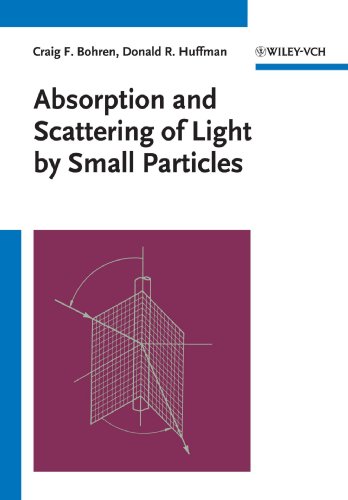Absorption and scattering of light by small particles ebook download
Par rodriguez letitia le samedi, août 29 2015, 21:10 - Lien permanent
Absorption and scattering of light by small particles. Craig F. Bohren, Donald R. Huffman

Absorption.and.scattering.of.light.by.small.particles.pdf
ISBN: 047105772X,9780471057727 | 533 pages | 14 Mb

Absorption and scattering of light by small particles Craig F. Bohren, Donald R. Huffman
Publisher: John Wiley & Sons
Fluorescence is a process in which some of the incident radiation is absorbed by the particle and is then later re-emitted as spontaneous emission [11]. This Rayleigh scattering, named after the British physicist Lord Rayleigh, happens when light is scattered off particles of material that are much smaller than the wavelength of the light. For optical interactions that are confined to the particle surface (e.g., opaque particles) the optical signal depends on the particle surface area and varies as the square of the particle radius. Scattering in tissue is the main reason tissue is not transparent; absorption also plays a role but much less so. It is much more effective for short wavelengths of light, that is, To look through the clouds at what lies behind, astronomers would need to observe the nebula using longer wavelengths that would not be absorbed. We study the light scattering by a dimer of metallic nanoparticles. Light relative to S-polarized light. For opti- cal interactions that are .. Perfusing tissue with a substance to match Scattering in tissue is dominated by Mie scattering which is the scattering of light by particles of a size on the same order as the wavelength of light (Rayleigh scattering is for particles much smaller than the wavelength): cells, nuclei, and organelles all fit in this category. We show that the quasi-static approximation fails when the scattering becomes predominant over absorption.